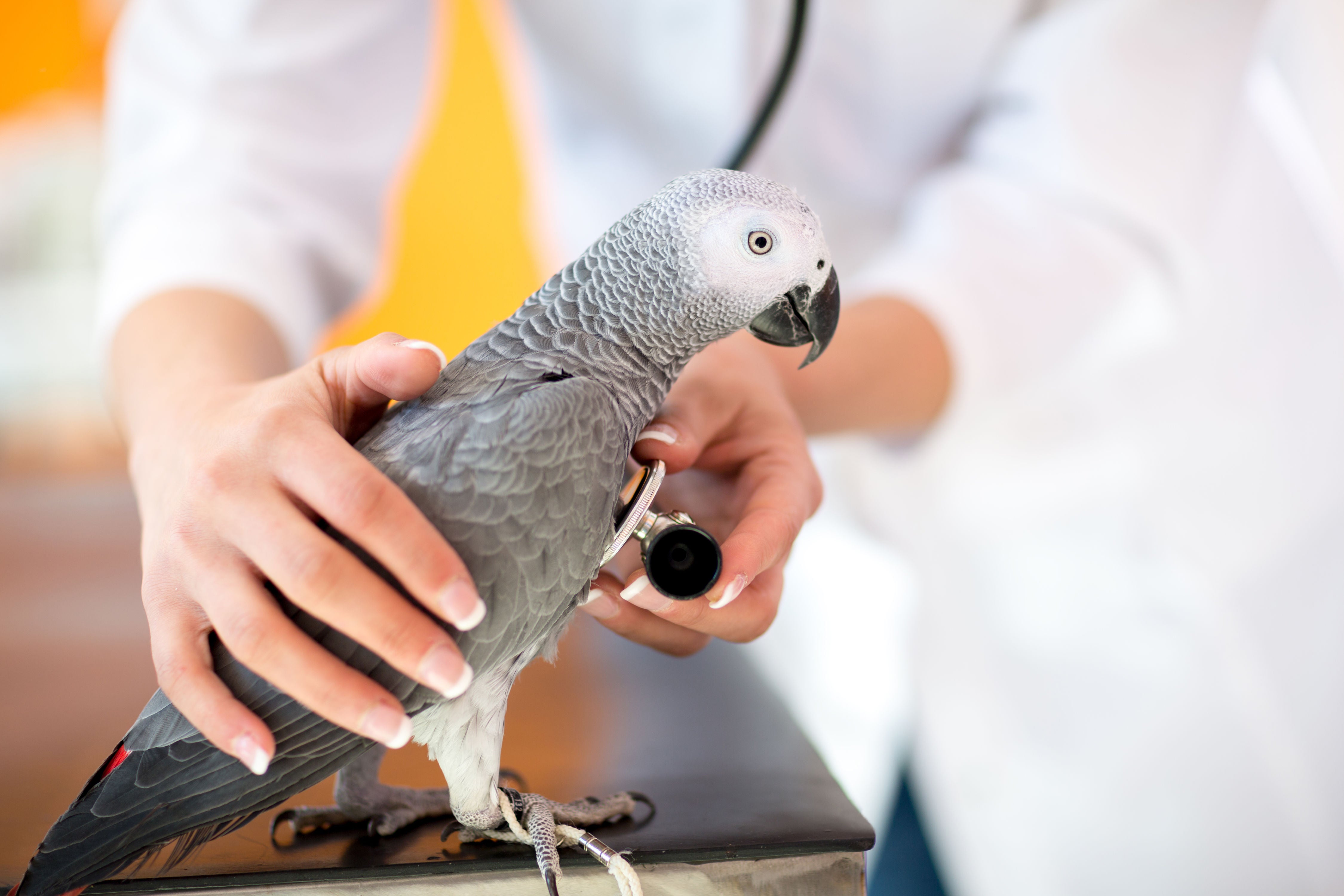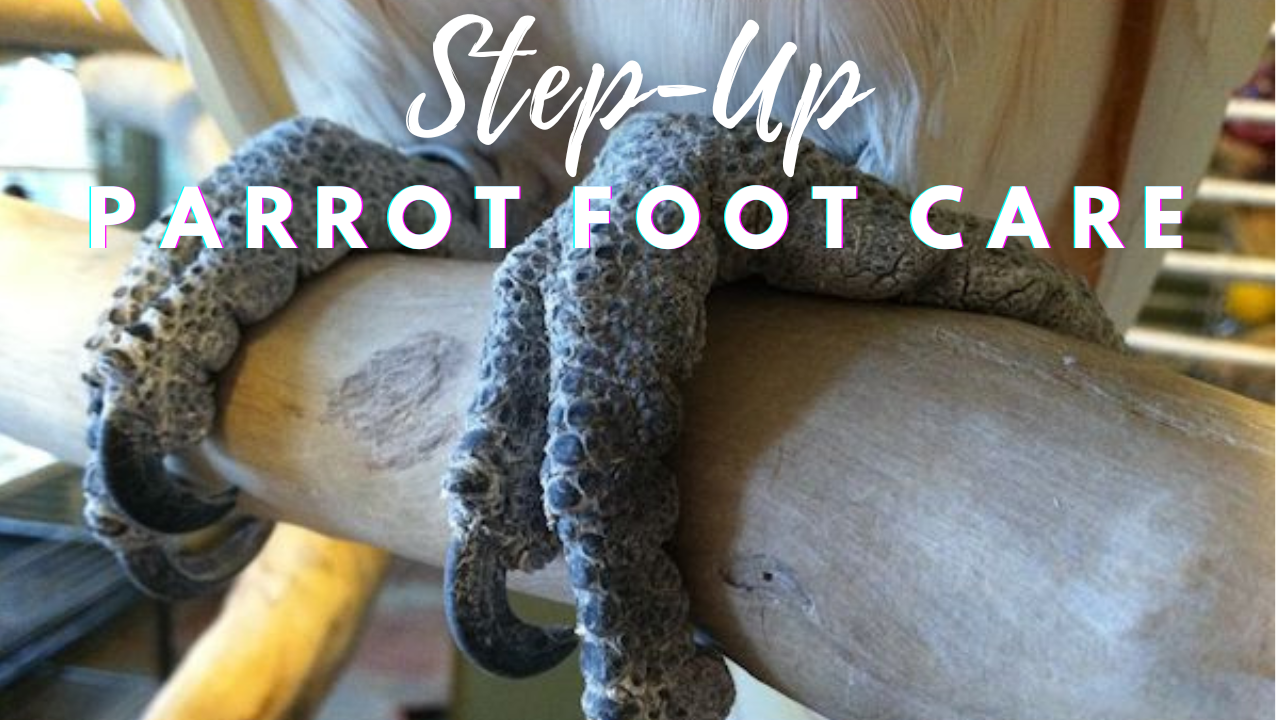Parrots and other birds have amazing eyes. Their eyes make all of the filters and editing options on your Iphone 12 seem obsolete.
Of all the avian senses, their color vision in particular is spectacular! Bird's have more cones and many, including our parrot's, are able to see ultraviolet colors.
Also, birds can use their right and left eyes for different tasks and their brains can literally focus on two things at once. Like their brain can process how to navigate to reach that tiny piece of fruit in a tree while at the same time focus on the horizon or a potential predator.
Just check out this video to learn about the complex features of birds eyes:
But, just like you and I, birds can develop a variety of dangerous and sometimes deadly parrot eye problems. In this blog post I will answer the following questions:
Table of Contents
PARROT EYE PROBLEMS OFTEN REQUIRE MEDICAL ATTENTION
Take a good look at your birds’ eye when it is normal. You’ll note a bright, clear eye-ball with open eye-lids and no discharge like the hyacinth macaw above.
Parrot eye problems are actually quite common. While parrot eye problems are usually very painful, they are usually not imminently life threatening. Meaning the bird isn't going to die at any second.
Nevertheless, we suggest that you take a trip to the vet as soon as possible whenever you notice parrot eye problems. Your vet can provide important topical antibiotics and other eye saving medications.
Why? because the underlying condition, such as conjunctivitis, sinusitis, mites, infection or other problems can quickly progress and become deadly.
Your vet can provide important topical antibiotics and other eye saving medications.Your goal is to prevent the condition from worsening and to prevent permanent blindness.
This cockatiel, below has an abscess around the nares caused by Vitamin A Deficiency. This infection could have easily spread to the eye that is only an inch away.

What Are The Symptoms of Parrot Eye Problems?
- Swollen or red eye-lids
- Lids closed or partially closed
- Increased blinking
- Squinting
- Excessive tearing, wet or dried discharge or even eyes matted shut
- Cloudy cornea that is opaque or bluish in color
- Rubbing the eye, beak or the side of the face on their wing or perch
What Causes Parrot Eye Problems?
If you suspect parrot eye problems it's always best to take your bird to the vet. There are a number of rather common eye problems that your bird can experience. For instance birds can get bacterial, viral, and fungal infections in their eyes. There are even parasites that can get into a bird's eyes.
According to wag.com common parrot eye problems include the following:
- Bacteria, such as Staphylococcus spp., Corynebacterium spp., Escherichia coli, Chlamydia psittaci, Clostridium botulinum, or Mycoplasma spp.
- Viruses, such as poxvirus, Newcastle virus, paramyxovirus, herpesvirus, adenovirus, pneumovirus
- Fungus, such as Aspergillus spp. or Candida albicans
- Parasites, such as nematodes, trematodes, or spirurids
- Foreign bodies, such as seed husks, millet seeds, or feathers
- Trauma or ulceration
- Environmental toxin exposure, such as from cigarette smoke, chemicals, ammonia in feces, and other airborne toxins
- Periorbital or orbital disease
- Poor hygienic conditions
- Vitamin A deficiency
How To Get A Bird’s Eye View
If you suspect that parrot eye problems, take a closer look. Be very careful not to stress your bird out and avoid scratching the eye.
Here is how to examine parrot eye problems:
- Grab your bird first aid kit. You'll also want to gather up the following supplies:
- A fresh, clean towel
- Sterile gloves
- Flashlight
- Magnifying glass
- Saline Solution
- Cotton Balls
- Put the sterile gloves on and towel your bird.
- You may need a partner to hold the magnifying glass or flashlight.
- Look for the following
- A foreign object in the eye
- Opaque or cloudy cornea
- Discharge
- Redness
- Nearby abscesses
- How does the affected eye look compared to the other eye?
How To Safely Remove A Foreign Object From The Eye
Gently open the birds’ eye and look for a foreign object, like a seed hull or a piece of string. Foreign objects in the eye, like a seed husk, can be painful so you'll have to flush it out. You know what I’m talking about if you’ve ever had an eyelash stuck in your eye.
Bird’s can also get chemical dust in their eyes when you use household aerosol cleaning chemicals. You’d want to flush the eye in this case, too.
Flush the eye out well with sterile, preservative-free saline solution or eye wash. You can use a syringe filled with tepid, sterile water if you don’t have eye wash available. Once you’ve flushed the eye out, wipe the area with a clean cotton ball. Be extremely careful not to scratch your birds’ eye.
Call your veterinarian to see if they want to prescribe antibiotic eye drops.
You’ll want to get your bird to the veterinarian as soon as you suspect a parrot eye problem. Most vets deem a parrot eye problem and emergency to avoid further vision deterioration.
You may moisten a cotton ball with saline solution to keep the eye keeping moist while you transport your bird to the vet.
7 COMMON HEALTH ISSUES THAT CAN AFFECT EYES:
If you suspect parrot eye problems it's always best to take your bird to the vet as soon as they can get you in. The last thing that you want to have happen is for your bird to go blind or to die. Parrot eye problems are considered a medical emergency.
Here is a list of 7 common issues that can affect your bird's eyes. While I don't want to scare you, it is important to know that many of these contagious diseases can be avoided with good parrot hygiene and husbandry.
1. MYCOBACTERIOSIS
Also known as avian tuberculosis, mycobacteriosis is a bacterial infection that is often difficult to treat and often proves fatal. Primary symptoms include weight loss and diarrhea.
Some infected parrots develop eye masses and external and internal masses. Mycobacteriosis is transmissible to humans so always wear rubber gloves when treating or handling your sick parrot. Anyone who suffers from a compromised immune system should not handle the bird.
2. PSITTACOSIS
Psittacosis, also known as chlamydiosis or parrot fever, might cause discharge from the eyes and nose. In addition, you may notice breathing difficulties, depression, and appetite loss. An otherwise chatty bird may become quiet and lethargic.
Isolate your bird from other birds in the household, follow doctors orders and administer medications and keep his surroundings as stress-free as possible. Please note that your vet may be required to report the disease to the authorities.
3. SALMONELLOSIS
Salmonellosis, or an infection by some type of salmonella bacteria, primarily affects the intestines, but infected parrots might experience swollen eyelids or conjunctivitis. The latter is an inflammation of the eyelid's lining.
Your vet will determine what type of salmonella is affecting your bird via a fecal sample. She'll then prescribe the appropriate antibiotics. Most parrots recover from salmonella infection.
4. VITAMIN A DEFICIENCY (VAD)
Vitamin A deficiency in parrots is more common than you think and the symptoms are both alarming and miserable. All sized captive birds are prone to this disease. This highly treatable disorder is also highly preventable.
Parrots' with a vitamin A display a variety of symptoms.
Swelling around the eye(s) from Vitamin A Deficiency is known as a periorbital abscess.
Secondary infections, usually respiratory and affecting the eyes, often occur because of the deficiency. You may also notice diarrhea, appetite loss, mouth abscesses, depression and tail-bobbing.
Seen in parrots on seed and nut diets, this painful disorder is correctable with a healthy diet such as Harrison's High Potency. Supplements such as UnRuffledRx Red Palm Oil can help prevent VAD.
5. CONJUNCTIVITIS
The conjunctiva is the membrane that lines the inside of the eyelid. It occasionally gets inflamed or infected. You’ll usually see a discharge when conjunctivitis is present.
6. MITES
Common in parakeets, finches, lovebirds, doves, canaries and pigeons the Knemidokoptes pilae or scaly face mite attacks a birds’ bare skin around the facial region. You’ll see a powdery grayish-white honey-comb looking tissue around the eyes, cere, beak, vent, feet and legs.
Scaly mites can cause beak deformity if they are allowed to progress, so get your bird to the vet for proper identification. Next, get instructions on how to control them or eradicate them. If the beak becomes misshapen, then it will require periodic trimming for the rest of the bird’s life, most likely.
7. SINUSITIS
Larger birds tend to be more prone to sinusitis than smaller birds. Birds have a complicated sinus system whereby their numerous air sacs connect with the sinuses.
Avian sinuses can become infected from either injury or a respiratory infection. Anything that inflames the sinus' will also inflame the eyes.
While the infection is usually bacterial, it can also be fungal in nature. A bird with Sinusitis generally has swelling and / or discharge in one or both eyes. The eyes can have so much gummy discharge that the eyes may be matted shut. You’ll note a loss of appetite and fluffed appearance.
In Conclusion...
Parrot eye problems are more common than you think. Contact your avian vet if you suspect parrot eye problems.
If your bird is being treated for an eye problem, it will be wise to offer it a bird hospital cage for a stress-free recovery. You can learn more about How To Make A Parrot Hospital Cage here.
Related Posts:
A Closer Look at Bird Eye Infections And How To Treat Them
References:
Burkett, Greg. Avian First Aid: Be Your Bird's First Responder! DVD.
Hawcroft, Tim. First Aid for Birds: The Essential, Quick Reference Guide. Howell Book House. 1994.
http://www.azeah.com/Care-Sheets.asp?id=149
http://www.azeah.com/Care-Sheets.asp?id=152
http://www.azeah.com/Care-Sheets.asp?id=186
http://www.critters360.com/index.php/sinusitis-in-birds-signs-and-treatments-15376/
https://www.petmd.com/bird/conditions/eyes/c_bd_Eye_Disorders




